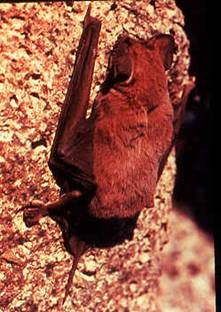
The Molossidae, or free-tailed bats, are a family of bats within the order Chiroptera. The Molossidae is the fourth-largest family of bats, containing about 110 species as of 2012. They are generally quite robust, and consist of many strong-flying forms with relatively long and narrow wings with wrinkled lips shared through their genus. Their strong flying form allows them to fly 60 miles per hour using tail winds and at altitudes over 10,000 feet. This makes them unique among bats, as they are the only bat family that withstands the elevation. They are widespread, being found on every continent except Antarctica. They are typically found in caves, abandoned mines, or tunnels.
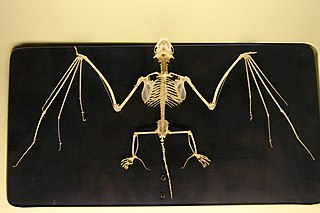
Molossus is a genus of bats. The genus contains ten species with a New World distribution from Mexico in the north to northern Argentina at its most southerly limit. Four of these species have distributions that include various islands in the West Indies such as Puerto Rico or Trinidad.
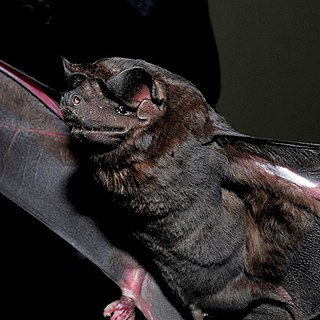
The black mastiff bat is a bat species. It ranges from the northern region of South America, most of Central America and parts of southern Mexico.
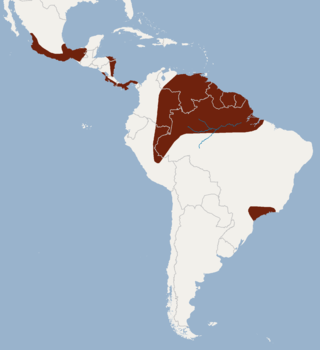
The tricolored big-eared bat is a bat species from South and Central America.
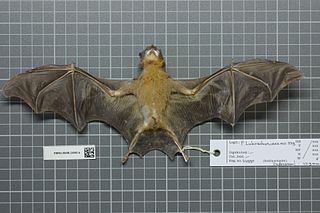
The yellow-throated big-eared bat or orange-throated bat(Lampronycteris brachyotis) is a species of bat that ranges from southern Mexico to Brazil. It is the only species within the genus Lampronycteris. A frugivore and insectivore, it is found in lowland forest up to an elevation of 700 m. Its activity is greatest in the first two hours after sunset, and peaks again after midnight.

The pygmy round-eared bat is a bat species from South and Central America.

Niceforo's big-eared bat is a bat species from South and Central America, ranging from Chiapas to Bolivia and northeastern Brazil. Its habitat is primary and secondary forest at altitudes from sea level to 1000 m. It is crepuscular, being most active in the hour after sunset and before dawn. The species is monotypic within its genus.

Allen's yellow bat is a species of vesper bat. There is some taxonomic debate surrounding this species, with some authors considering Baeodon a genus rather than a subgenus. It is endemic to Mexico.
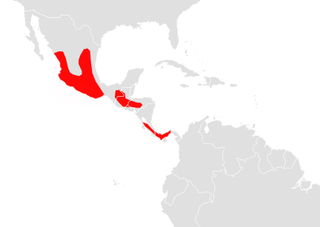
The Aztec fruit-eating bat is a species of bat in the family Phyllostomidae.

Miller's mastiff bat is a species of bat in the family Molossidae. It is found in Brazil, Colombia, Costa Rica, Guyana, Mexico, Nicaragua, and Venezuela.

The Sinaloan mastiff bat is a species of bat in the family Molossidae, native to Mexico, Central America and northern South America.

The Coiban mastiff bat is a species of bat in the family Molossidae. Its range extends from Chiapas in southern Mexico to Mato Grosso in Brazil, including Peru, Ecuador, Venezuela, Panama, Costa Rica and El Salvador. The taxonomic status of the populations in Central America is uncertain. The species is insectivorous and is known from a variety of forest habitats at elevations from near sea level to 1300 m.

Platyrrhinus ismaeli is a species of bat found in South America.

Molossus alvarezi, or Alvarez's mastiff bat, is a species of bat in the family Molossidae, native to the Yucatán Peninsula. It lives within a relative homogenous environment within perennial forests, low forests, and a band of xeric vegetation.
















